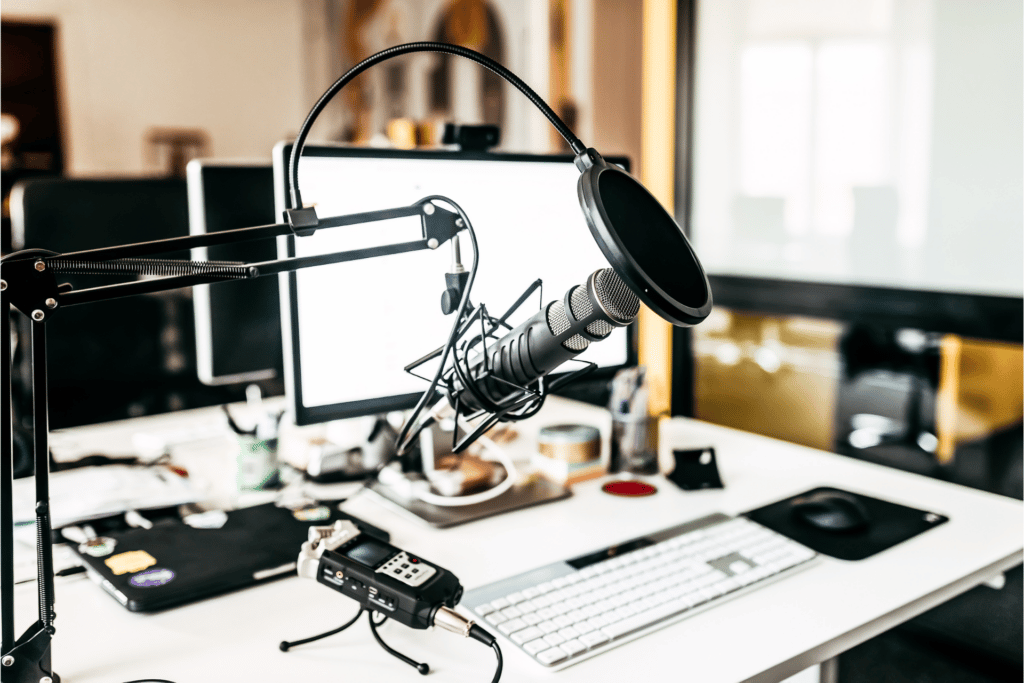While it’s true that you can launch a podcast with your smartphone, it is certainly not the way to create a quality product that people will enjoy listening to.
Tip #1: Consider your podcast's persona
First and foremost, as with any communication project, you need to consider one question: is there an audience for my message? The answer to this question can come from a variety of sources. The simplest: the existence of other podcasts or established YouTube channels on the subject. If your idea is very different from what already exists in your field, you’ll need to rely on your knowledge of your target audience or, if it’s not well defined, do some market research.
If you have an audience for your content, then the priority becomes identifying the main segment you want to reach and bringing it to life by creating your persona. The bare minimum is to give that persona a name, a gender, and an age. Ideally though, it’s best to make them even more real, with demographic data and detailed psychological and behavioral portraits. This will allow you to tailor your message accordingly and ensure that your audience receives it as intended, when intended.
Once this work is done and the idea for the podcast is put on paper, there are several decisions to be made about the format in which it will be produced: short, long, solo, co-hosted, weekly, biweekly, monthly, with or without guests. Again, the decision will be based, in part, on the persona you created. That being said, the format is also dictated, in part, by certain imperatives independent of the persona, such as the amount of time and budget you have to invest, your access to a studio, to guests, and to a team of co-hosts, for example.
Once you’ve done this groundwork, you’ll have laid the foundation for your podcast – bravo!
The other two best practices for producing quality podcasts are technical in nature and have to do with sound recording and, therefore, the quality of the audio of the podcast once produced and published.
Tip #2: Use a good microphone to record the podcast
The first has to do with mic selection. Although we are surrounded by microphones today –t he one on our smartphone, the one on our tablet or laptop, the one on our webcam – they don’t meet the criteria for recording a well-produced podcast. Indeed, these microphones do not isolate the voice of the person being recorded, picking up a multitude of ambient noises. They tend to render a narrow range of frequencies, and do not capture the color and depth of the recorded voice, often making it distorted. Finally, they are very sensitive to vibrations generated by small movements you make, such as friction on clothing and impacts on the table or computer.

Our advice is to choose a dynamic microphone and a stand or an articulated arm that allows it to be partially isolated from shocks. The advantage of dynamic microphones is that, because of the way they are constructed, they are ideal for capturing voice and bringing it forward, isolating it from ambient sounds. Depending on the model, they reject any sound that does not come from in front of the microphone to varying degrees (e.g., keyboard noise, echoes reflected off the walls). There are good choices of USB-connected dynamic microphones available today at affordable prices. If you have a sound card with an XLR input, the choices are even more varied and include industry standards such as the Shure SM7B or the Rode Procaster.
Tip #3: Choose your recording room strategically
Once you’ve chosen your microphone, the final step is to create an environment as close to a studio as possible, or to find a particularly quiet and peaceful place to consistently make your recordings. While your audience may occasionally tolerate your podcast sounding different or worse – due to a technical problem, for example – they are used to consistent audio quality and sound from well established, high production value podcasts.
So, what to look for in this “studio space”? First, anything but a cubical room with bare walls – the vibrations of your voice and any sound you make will be very unpleasant to the ear. A good example in a house is a walk-in closet, where not only is you are isolated from outside noise, but also no reverberation is possible, as everything is dampened by the clothes hanging around you.
Between these two extremes, you can choose furnished and decorated rooms, where all sounds can be scattered on different surfaces. You can also hang thick blankets over bare surfaces. Since you have a dynamic microphone, you need only worry about the wall or surfaces behind you, that may reflect the sound back to the microphone’s sensitive area.
And there you have it. On these three key elements, you can build a solid foundation for a podcast that people will enjoy listening to and adding to their daily routine.
For more information: Want to start a podcast? Need advice or help?
Contact us: [email protected]

